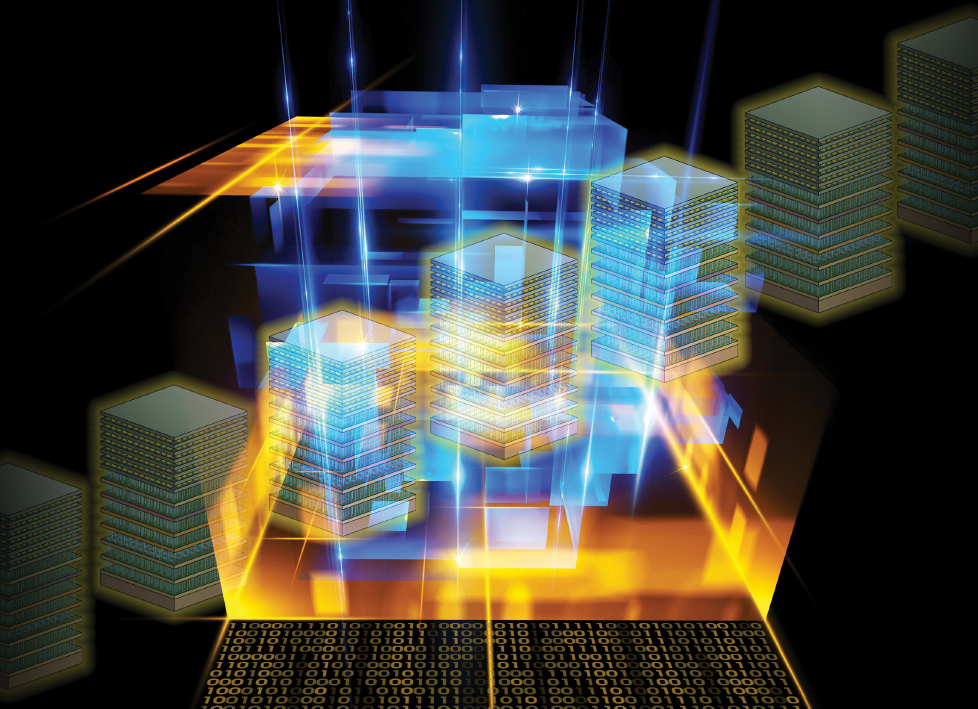Special Issue on Nonsilicon, Non-Von Neumann Computing - Part I

The future of computing is at crossroads. The technological advances that have sustained the exponential growth of computing performance over the last several decades are slowing and the roadmap for future advances is uncertain. The phenomenal expansion of computing power has made computers ubiquitous, spawned a $300 billion semiconductor industry, enabled unprecedented global economic growth, and transformed many aspects of society at large. Emerging technologies are placing an ever-growing and changing demand on computing, especially the profusion of data from the Internet of Things, large-scale scientific experiments (high-energy physics, astronomy, and genomics), autonomous vehicles, social media (including video), national security systems, and the finance sector. Transmitting, storing, processing, and analyzing this data explosion with the requisite speed and performance—and enabling significant processing and analysis to occur locally or at network nodes (i.e., edge computing)—may require a radical departure from the traditional computing paradigm of von Neumann computing architectures running on CMOS based digital logic. New paradigms will likely require a range of new devices, software, design and simulation tools, and benchmarking, and may ultimately require rethinking the tasks that computing machines undertake. Recently, government, industry, and academia collectively have recognized that the future of computing requires a new, multidisciplinary research and development agenda The technology challenges facing the semiconductor industry have widely been discussed [1]. The industry itself has described the most pressing needs in a September 2015 report, Rebooting the IT Revolution: a Call for Action [2], and proposed a new research agenda and path forward in Semiconductor Research Opportunities: An Industry Vision and Guide [3]. The collective message of these reports is the need for a body of fundamental research to create a new, more energy-efficient computational engine enabling real-time analysis of extraordinary volumes of high-rate data streams generated by the emerging information technology applications. While the technical issues surrounding the problem have been discussed in the research community for some time [4], both industry and government have recently undertaken significant activities supporting cross disciplinary research to address the future of computing.
The advances in computing associated with Moore’s Law and Dennard scaling—the drive toward ever smaller and faster transistors—have slowed in recent years as some fundamental limits of the long established silicon CMOS technology have been approached. In particular, clock frequencies have been stagnant since roughly 2005, limited by the unavoidable tradeoff between power dissipation and switching speed. Thus, in a search of more power efficient computing, a plethora of strategies and techniques for low power computing involving all layers of the computing stack—from materials to devices, circuits, architectures— are being considered in the special issue of Proceedings of the IEEE in Jan. 2019. Meanwhile, the hardware community has also been stirred up by the push for AI technologies as well as quantum computing and quantum information sciences. While the fields of AI and machine learning have gone through the cycles of interest in the past, the emergence of effective (and, therefore, economically important) algorithms for pattern matching and correlation finding has brought interest to an intense new peak. The need to implement deep learning algorithms with energy-efficient hardware has in turn spiked interest in neuromorphic hardware. The NNI grand challenge of 2015 presciently focused on low-power cognitive computing as needed for local or edge implementations of AI. While several papers in this special issue do indeed touch upon the topics of AI and brain-inspired computing, Part II will have more on this topic. Furthermore, two papers originally considered for publication in Part II of this special issue have recently appeared in the Proceedings of the IEEE as standalone publications (cf. [4] and [5]).
References
[1] H. N. Khan, D. A. Hounshell, and E. R. H. Fuchs, “Science and research policy at the end of Moore’s law,” Nature Electron., vol. 1, pp. 14–21, Jan. 2018. [Online]. Available: https://doi.org/10.1038%2Fs41928-017-0005-9
[2] [Online]. Available: https://www.src.org/newsroom/rebooting-the-it-revolution.pdf
[3] [Online]. Available: https://www.semiconductors.org/clientuploads/Research_Technology/SIA%20…
[4] V. Sze, Y. Chen, T. Yang, and J. S. Emer, “Efficient processing of deep neural networks: A tutorial and survey,” Proc. IEEE, vol. 105, no. 12, pp.2295–2329, Dec. 2017,
[5] S. Yu, “Neuro-inspired computing with emerging nonvolatile memories,” Proc. IEEE, vol. 106, no. 2, pp. 260–285, Feb. 2018.

